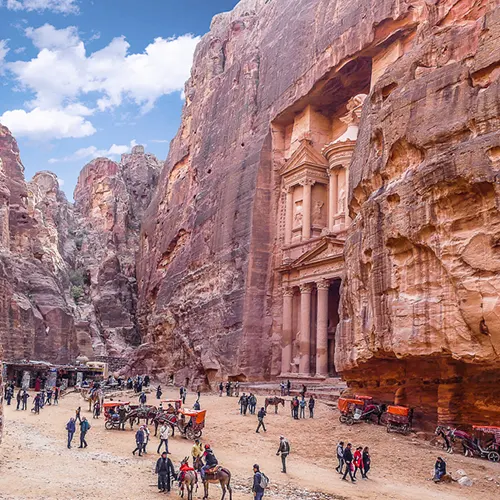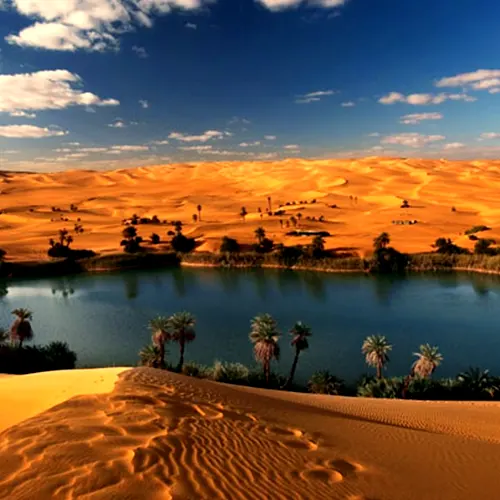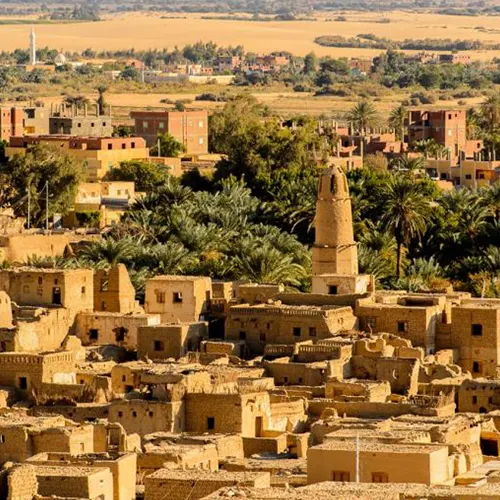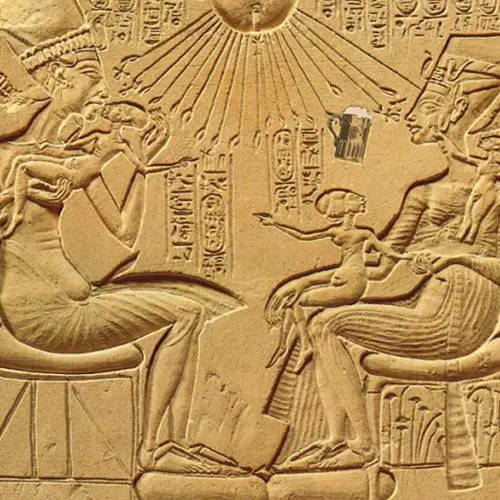Articales Maybe You like

Bahariya Oasis – The Western Desert
Bahariya Oasis is one of the most fabulous Egyptian oases in the western desert, as Egypt contains six oases El Fayoum Oasis, Farafra Oasis, Farafra Oasis, Kharga Oasis, Dakhla Oasis, and Siwa Oasis. It is affiliated with Giza Governorate. The history of Bahariya Oasis Like other Egyptian oases, Bahariya Oasis was an important stop point […]
Know More
Farafra Oasis – The Western Desert
Farafra Oasis is one of the most fabulous Egyptian oases in the western desert, as Egypt contains six oases El Fayoum Oasis, Bahariya Oasis, Farafra Oasis, Kharga Oasis, Dakhla Oasis, and Siwa Oasis. Farafra is located on the southern road between Cairo and Bahariya. Farafra Oasis is affiliated to the Al-Wadi Al-Gadid governorate in Southern […]
Know More
Petra City – The Red Rose City
Petra city is one of the largest historic and archaeological sites in the world. It is situated between the Red Sea and the Dead Sea in the south of Jordan. It is also known as the red rose city, due to most of its buildings were established by using red stones. This city is considered […]
Know More
Saint Catherine’s Monastery in the Sinai Peninsula
Saint Catherine’s Monastery is located on the slopes of Mount Sinai. It is considered one of the oldest monasteries in the whole world. This monastery was added to UNESCO’s World Heritage List in 2002. The names of Saint Catherine’s Monastery It is famous with Saint Catherine’s Monastery, but its original name is Sacred Monastery of […]
Know More
Al Minya City – Upper Egypt
Al Minya is one of the most important governorates of the upper of Egypt as its location between northern and southern Egypt. As well, it houses many historical sites and destinations dating back to different historical times. During the ancient Egyptian history This city was once one of the great capitals of ancient Egypt. Also, […]
Know More
Aswan City – History & Destinations
Aswan is one of the Egyptian cities in the upper of Egypt. It is located in the north of Nasser Lake. Aswan city distinguishes with its natural beauty, as it has the most beautiful views of the Nile River in Egypt ever. In addition, it houses unparalleled monuments dating back to several historical times as […]
Know More
Deir El Medina – the Valley of Workers
Deir El Medina is one of the most famous sightseeing on the west bank of Luxor city, as it is a city for the locals located inside a royal site. Here, you will see another kind of tombs; they are not royal tombs but belong to ordinary citizens who built the royal tombs. The history […]
Know More
Siwa Oasis – The Western Desert
Egypt distinguishes with housing six oases located in its western desert. These oases are EL Fayoum Oasis, Bahariya Oasis, Farafra Oasis, Kharga Oasis, Dakhla Oasis, and Siwa Oasis. All of these oases characterize by having a unique history and natural and charming beauty. Siwa Oasis Siwa oasis is described as a green space sitting among […]
Know More
Abusir Necropolis – Historical Site
Abusir Necropolis is considered an essential part of the Memphis Necropolis, where the ancient Egyptian kings of the fifth dynasty built their pyramids. Abusir Necropolis houses fourteen pyramids, but the most famous pyramids there are the pyramids of king Neferirkare, Niuserre, and Sahure, dating back to the fifth dynasty. Additionally, the temple of the sun […]
Know More
Dahshur Necropolis – Historical Site
Dahshur is considered as an important part of the Memphis Necropolis, where Pharaonic kings built their pyramids. Dahshur Necropolis is located on the west bank of the Nile River, approximately 40 km southwest of Cairo city. The importance of Dahshur Necropolis lies in reflecting two important stages of the architectural development used by the ancient […]
Know More
Dahshur Necropolis and its Countryside
Discover Dahshur Necropolis and its countryside with Egypt Vacation Tours experts. In Dahshur Necropolis and its countryside tour, you will be able to visit ancient Egyptian attractions and find out its local community by visiting its countryside. In the countryside of Dahshur, you will allow you to discover the community of Dahshur by visiting a […]
Know More
Saqqara Necropolis – Historical Site
Saqqara is one of the most important cemeteries in Memphis Necropolis. It contains thousands of tombs (royal pyramids and mastabas). Among these tombs, there is the step pyramid of king Djoser, the oldest pyramid in the ancient Egyptian civilization. Let’s take a tour in Saqqara Necropolis 1 – King Djoser Complex and The step pyramid […]
Know More
El Fayoum Oasis – Sightseeing of El Fayoum
El Fayoum Oasis is Located 100 kilometers southwest of Cairo. It is famous for its biodiversity and scenic destinations. Also, it distinguishes with containing various types of tourism as Archaeological, tourist, rural, recreational, and environmental. In El Fayoum, you will be able to enjoy visiting historical and archaeological buildings, the waterfalls and the natural beauty, […]
Know More
Tuna El-Gebel in Al Minya Governorate
Tuna El-Gebel Necropolis is an important historical site in Al Minya Governorate. The ancient Egyptians considered it the center of worshiping the god Thoth or Djhuty, the god of wisdom and knowledge in ancient Egyptian civilization. Let’s have a tour in Tuna El-Gebel Necropolis in Al Minya Governorate Firstly, you should know about the history […]
Know More
Al-Alamein City in Marsa Matrouh – the World War II
Al-Alamein city is located on the west of Alexandria in Marsa Matrouh governorate. It has a great history, especially during World War II making it an important attraction for many people around the world. Let’s learn about the history of that city The most ancient monuments in Al-Alamein City dates back to the Greco-Roman period. […]
Know More
Giza Necropolis – Historical Site
Giza Necropolis is located on the west bank of the Nile River, where the west bank is dedicated to burying the dead people according to the ancient Egyptian beliefs. Giza Necropolis or Giza Pyramid Complex contains nine royal pyramids of the fourth dynasty, old kingdom as the great pyramid of King Khufu, the Pyramid of […]
Know More
Port Said City – A Coastal Destination
Port Said city is one of the most important cities in Egypt, after Cairo and Alexandria. It is a coastal city overlooking the Mediterranean Sea, It is considered the entrance of the Suez Canal from the north. Let’s learn more about the history of Port Said City Port Said City was constructed after the foundation […]
Know More
Dakhla Oasis – The Western Desert
Dakhla Oasis in the Western Desert is one of the seven Egyptian oases. It is located in the New Valley Governorate, between Farafra and Kharga Oases. It is famous for housing beautiful verdant gardens of dates and olives. The history of Dakhla Oasis 1 – Dakhla Oasis has a great history. Some specialists think that […]
Know More
Beni Hassan in Al Minya Governorate
Beni Hassan Necropolis is an important historical site in Al Minya Governorate. It is located on the east bank of the Nile River. The importance of Beni Hassan Necropolis in Al Minya Governorate The golden history of Beni Hassan began during the middle kingdom in ancient Egyptian civilization, as local rulers and military leaders built […]
Know More
Tell El-Amarna in Al Minya Governorate
Tell El-Amarna lies in Al Minya Governorate on the east bank of the Nile River. It is also called Akhetaten. It was the capital of ancient Egypt during king Akhenaten or Amenhotep IV period in the eighteenth dynasty. The history of Tell El-Amarna city After king Amenhotep IV become the ruler in the 18th dynasty, […]
Know More